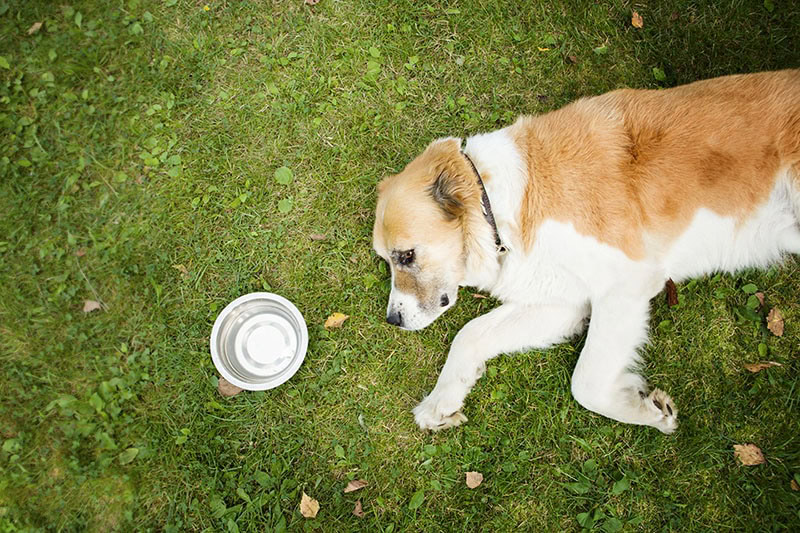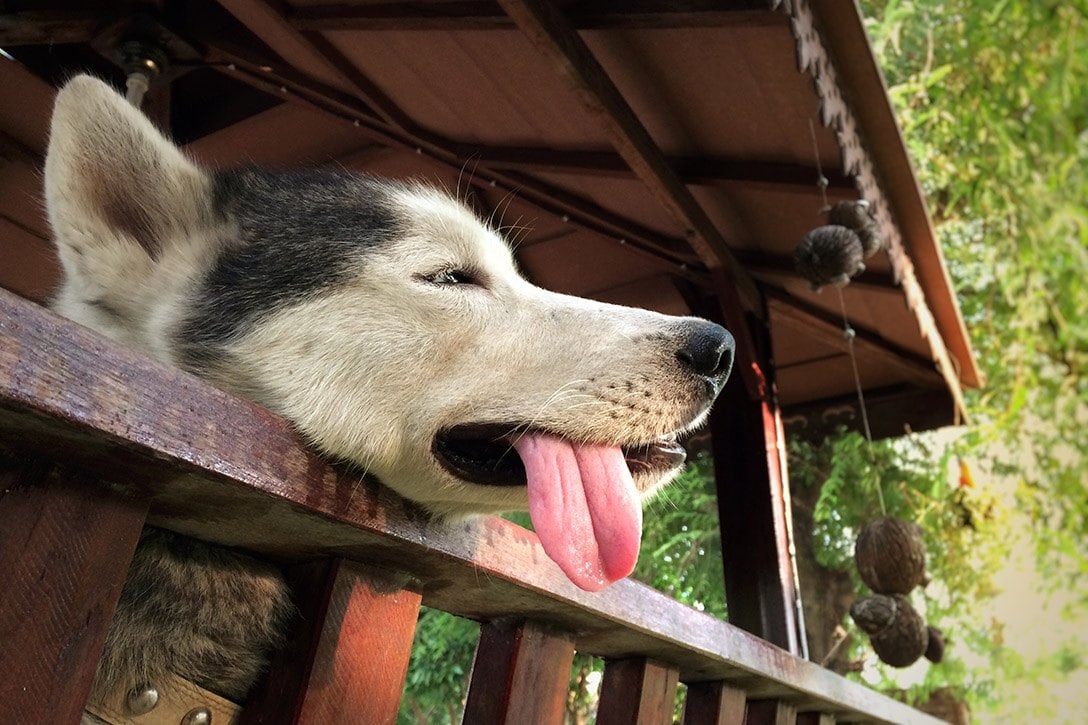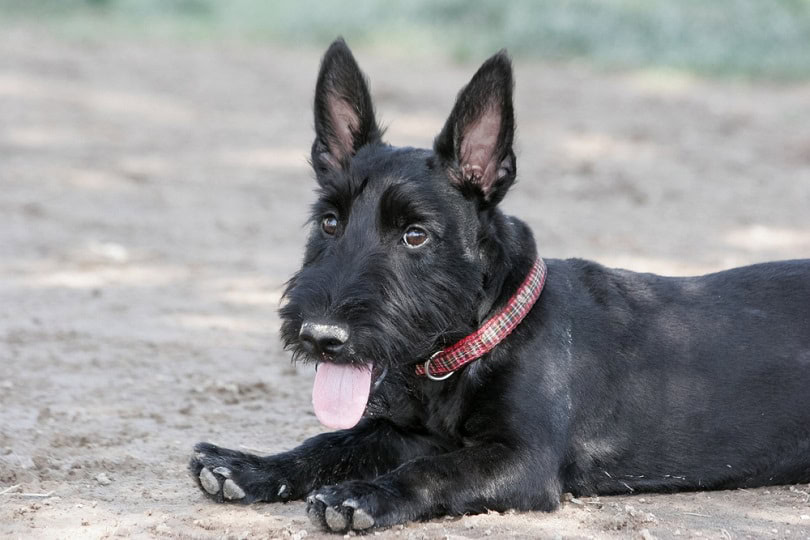VET APPROVED

The information is current and up-to-date in accordance with the latest veterinarian research.
Learn more »Click to Skip Ahead
If you spend time outdoors in the hot weather, you know you’re likely going to end up drenched in sweat. This admittedly messy bodily function plays a vital role in keeping us cool, but have you ever wondered if dogs also sweat? While dogs are capable of minimal sweating, they don’t rely on this method to keep cool as we do.
In this article, we’ll tell you the surprising location of your dog’s sweat glands and how dogs really cool themselves. Dogs use panting, cutaneous vasodilation, and contact with cool surfaces to dissipate heat. You’ll also learn how your dog keeps cool and how you can help keep their temperature normal in scorching weather. Finally, we’ll tell you how to recognize the early signs of heat-related illness and what to do if you’re worried your dog is getting overheated.

How Dogs Sweat
Humans have millions of glands that produce sweat, which helps release excess heat as it evaporates from our skin. Dogs have sweat glands in two locations: their paw pads and their nose. If a dog does produce sweat, it comes mainly from its feet.
Because they have so few sweat glands, this method is not very effective to keep them cool. Sweating is a human’s primary cooling method because we can evaporate enough sweat to regulate our body temperature effectively. That’s not the case for dogs, so instead, they rely on other methods, which we’ll discuss in the next section.

How Dogs Keep Cool
To keep their body temperature regulated, dogs rely on four mechanisms: evaporation, radiation, convection, and conduction.
Evaporation
Panting is the most well-known of a dog’s primary cooling methods. During panting, the dog loses body heat through moisture evaporating from their tongue, mouth, and upper airways. This method is essential for heat dissipation, especially in hot environments.
Radiation
Heat naturally moves from a warmer object to a cooler one. Through radiation, a dog’s body releases heat into the surrounding air. Cutaneous vasodilation, or the widening of blood vessels, increases blood flow to the skin, especially in areas with less fur, like the ears and face, enhancing heat loss.
Convection
Air movement, such as a breeze or a fan, aids in convection, where heat is carried away from the body. This is why dogs seek shade or prefer lying in areas with good airflow when they are hot. Increased cardiac output also helps move warm blood to the skin, further promoting cooling.
Conduction
When a dog lies on a cool surface, such as tile or damp grass, heat transfers from its body to the surface. This conductive heat loss is an effective way for dogs to cool down, especially if they have access to a cold floor or shaded ground.
Dogs rely on a combination of these mechanisms to regulate their temperature, but panting remains their primary cooling method. If a dog is unable to pant due to injury, heatstroke, or a restrictive muzzle, it is at a high risk of overheating and requires immediate intervention.

Helping Your Dog Stay Cool
Since dogs don’t have very effective ways to dissipate the heat, you’ll still need to take some precautions to keep your dog safe in hot weather, especially when humidity is high.
Avoid exercising your dog or leaving them outside during the hottest part of the day. Make sure your dog has plenty of water and shade anytime they spend time outdoors in the heat. Access to a water source, like a kiddie pool or sprinkler, is also helpful.
Keep your house comfortable, and ensure your dog has a cool surface to lie on. Cooling mats are available if you don’t have an uncarpeted surface for your dog to rest on.
Never leave your dog alone in the car, even with the windows cracked or the air conditioner running. The inside of your vehicle can reach life-threatening temperatures quickly. Dogs can easily shut off a car or air conditioner by accident, or it could break.
Signs of Heat Stroke
Heat-related illness can vary in severity, and heat stroke is extremely dangerous for your dog. Excessively high body temperatures, generally over 106.7 degrees Fahrenheit, put a dog at risk for life-threatening complications, including organ failure. Heat stroke is a medical emergency, and the faster treatment can start, the better.
- Fast and heavy breathing and a fast heart rhythm (tachycardia)
- Dry, red, or bruised gums
- Disorientation
- Dribbling, or thick saliva
- Collapse
- Seizures
If you suspect your dog is getting overheated, get them out of the sun and into a cooler location immediately. Get your dog to your vet or the nearest emergency clinic as soon as possible, but start cooling methods during transport, since this can reduce the mortality rate from 49% to 19%. An effective cooling method that combines evaporative and convective cooling is directing a fan or air conditioner toward the dog and applying cool or tepid water to the skin. Avoid applying wet towels to your dog because these can trap the heat, and avoid using ice pads because this causes peripheral vasoconstriction, preventing blood flow and efficient cooling.
The longer your dog’s temperature stays elevated, the more potential damage to its body. Certain breeds of dogs are at higher risk of heat stroke because of their facial shape. French Bulldogs, Pugs, and other flat-faced breeds can overheat much faster than dogs with longer noses.

Final Thoughts
Dogs can sweat, but they don’t rely on sweating to keep themselves cool as humans do. Even through panting, vasodilation, and lying on cool surfaces, dogs, especially flat-faced breeds, can become overheated faster than you might think. Heat stroke is a life-threatening emergency that can be expensive and difficult to treat. Help your dog stay cool and safe by keeping them inside when it’s hot, providing plenty of water, and never leaving them unattended in the car.
Featured Image Credit: GoDog Photo, Shutterstock












